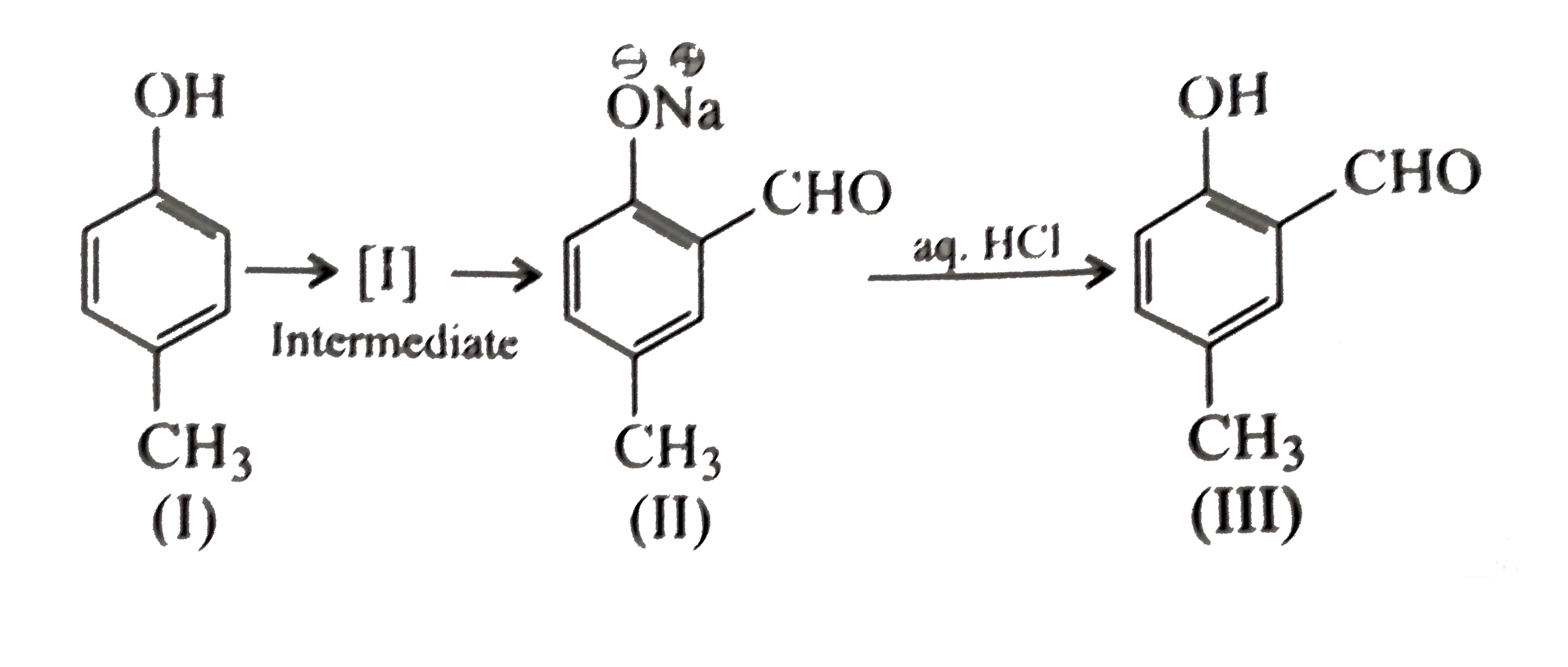Gattermann aldehyde synthesis
Step-by-Step Solution for Gattermann Aldehyde Synthesis
Step 1: Reactants Preparation
- Start with benzene (C6H6) as the primary reactant.
- Prepare the reagents: Hydrochloric acid (HCl), ethylene (C2H4), and aluminum chloride (AlCl3).
Hint: Remember that benzene is a stable aromatic compound and will require a strong electrophile for the reaction to proceed.
---
Step 2: Formation of Electrophile
- In the presence of HCl and AlCl3, a complex is formed where AlCl3 acts as a Lewis acid.
- HCl donates a proton (H+) to the nitrogen in HCN (hydrogen cyanide), forming a positively charged nitrogen species.
Hint: The Lewis acid-base interaction is crucial here; AlCl3 enhances the electrophilicity of the HCN.
---
Step 3: Electrophilic Attack on Benzene
- The positively charged nitrogen species (electrophile) can now react with the benzene ring.
- The electrophile attacks the benzene, resulting in the formation of a sigma complex (also known as an arenium ion).
Hint: Electrophilic aromatic substitution is key to this step; the benzene ring acts as a nucleophile.
---
Step 4: Rearrangement and Hydrolysis
- The sigma complex undergoes rearrangement, and hydrolysis is performed in an acidic medium.
- The double bond between carbon and nitrogen breaks, allowing the formation of a carbonyl group (C=O) and releasing ammonia (NH3) gas.
Hint: Hydrolysis is a critical step that converts the intermediate into the final product.
---
Step 5: Final Product Formation
- The final product, benzaldehyde (C6H5CHO), is formed after the hydrolysis step.
- The reaction can be summarized as: Benzene + HCl + HCN → Benzaldehyde + NH3 (gas).
Hint: The release of ammonia gas is an indicator that the reaction has reached completion.
---
Final Summary:
The Gattermann aldehyde synthesis involves the reaction of benzene with HCl and HCN in the presence of AlCl3, leading to the formation of benzaldehyde through electrophilic aromatic substitution and subsequent hydrolysis.
---
- Start with benzene (C6H6) as the primary reactant.
- Prepare the reagents: Hydrochloric acid (HCl), ethylene (C2H4), and aluminum chloride (AlCl3).
- In the presence of HCl and AlCl3, a complex is formed where AlCl3 acts as a Lewis acid.
- HCl donates a proton (H+) to the nitrogen in HCN (hydrogen cyanide), forming a positively charged nitrogen species.
- The positively charged nitrogen species (electrophile) can now react with the benzene ring.
- The electrophile attacks the benzene, resulting in the formation of a sigma complex (also known as an arenium ion).
- The sigma complex undergoes rearrangement, and hydrolysis is performed in an acidic medium.
- The double bond between carbon and nitrogen breaks, allowing the formation of a carbonyl group (C=O) and releasing ammonia (NH3) gas.
- The final product, benzaldehyde (C6H5CHO), is formed after the hydrolysis step.
- The reaction can be summarized as: Benzene + HCl + HCN → Benzaldehyde + NH3 (gas).
The Gattermann aldehyde synthesis involves the reaction of benzene with HCl and HCN in the presence of AlCl3, leading to the formation of benzaldehyde through electrophilic aromatic substitution and subsequent hydrolysis.
Topper's Solved these Questions
Similar Questions
(a) Phthalaldehyde Conc.NaOH−−−−−−−→ Product (→) Cannizzaro reaction
(b) α - Methylacylohexanone NaOH−−−−−−→Δ Product (→) Aldol condensation
( c) Toluene CrO2Cl2/CS2−−−−−−−−−−→H3O+ Product (→) Etard reaction
(d) Benzene +CO+HClAlCl3−−→ Product (→) Gattermann's Koch reaction
(e) Benezene +HCN+HClAlCl3−−→ Product (→) Gattermann's aldehyde synthesis
Which of the following is correct set :
View SolutionIn aldehydes and ketones
View SolutionGattermann-Koch Synthesis.
View SolutionGattermann-Koch Synthesis.
View SolutionGattermann-Koch Synthesis.
View SolutionGattermann Reaction
View SolutionGattermann Reaction
View SolutionGattermann Reaction
View SolutionGabriel phthalimide synthesis is preferred for the synthesis of
View SolutionReimer-Tiemann reaction introduces an aldehyde group on to the aromatic ring of phenol, ortho to the hydroxyl group. This reacrtion involves electrophilic aromatic subsititution. It is a general method for the synthesis of subsituted salicyladehydes as depiced below:

The electrophile in this reaction is:
View Solution
